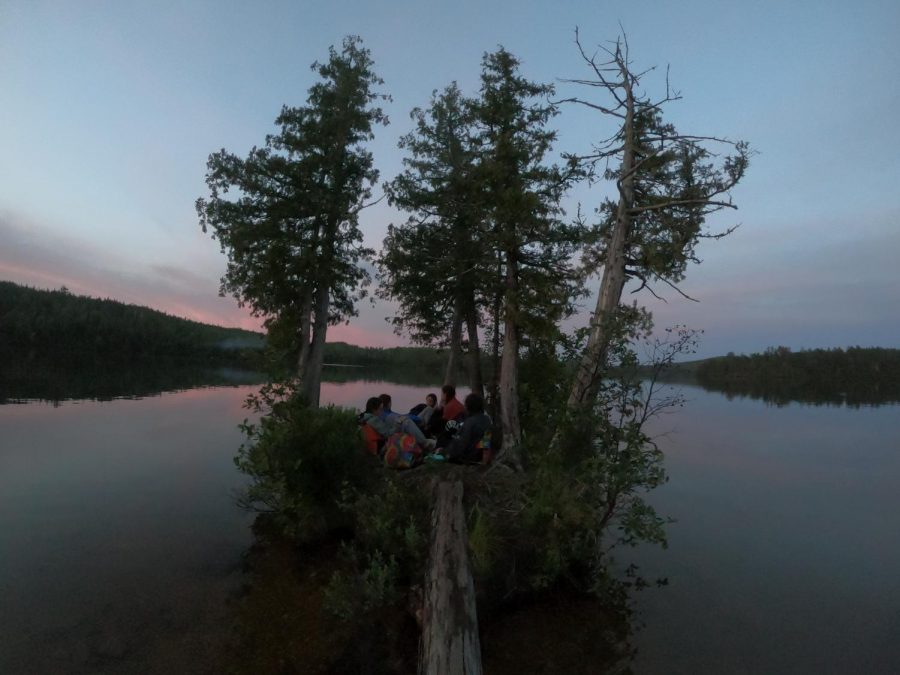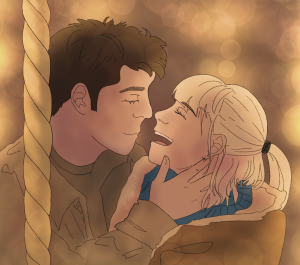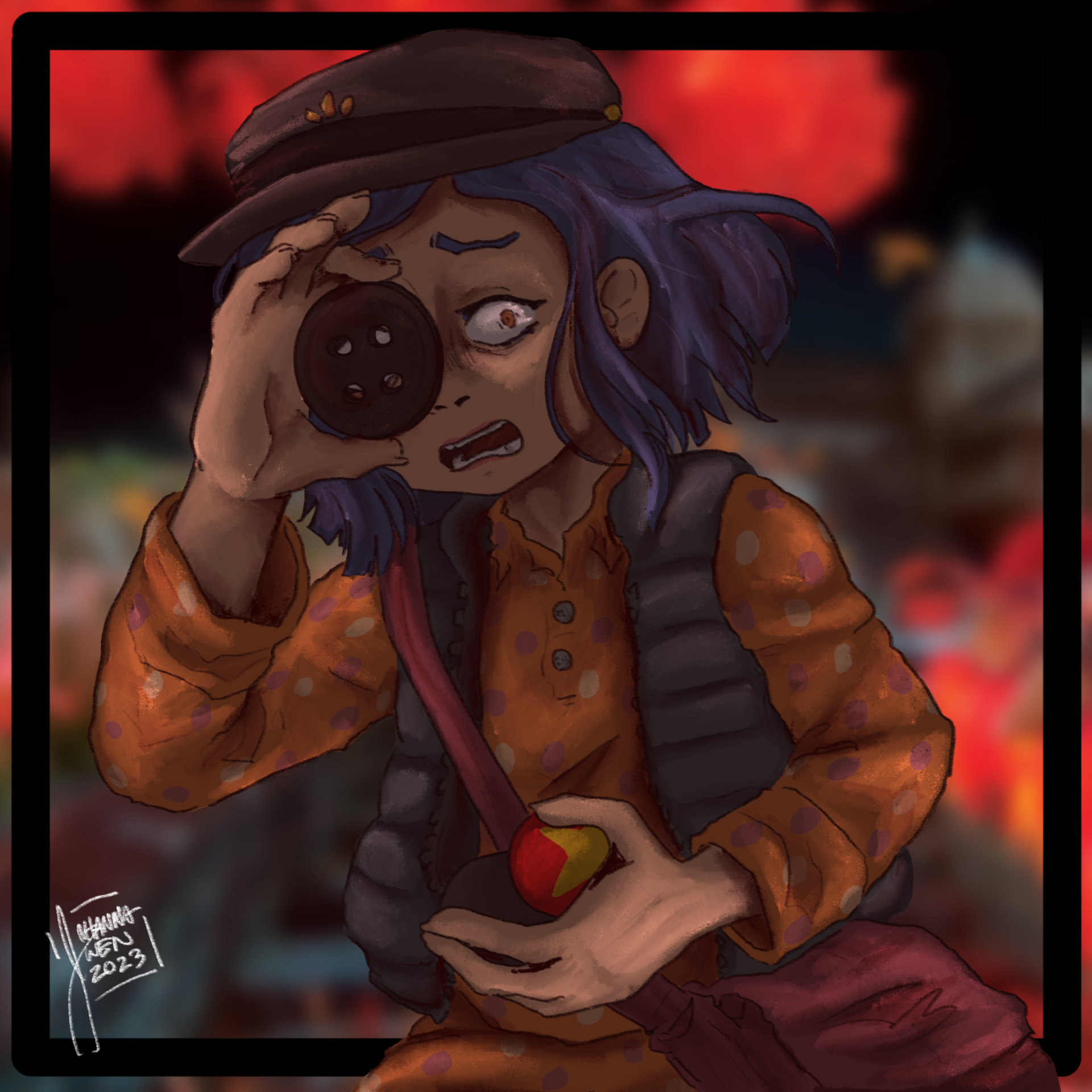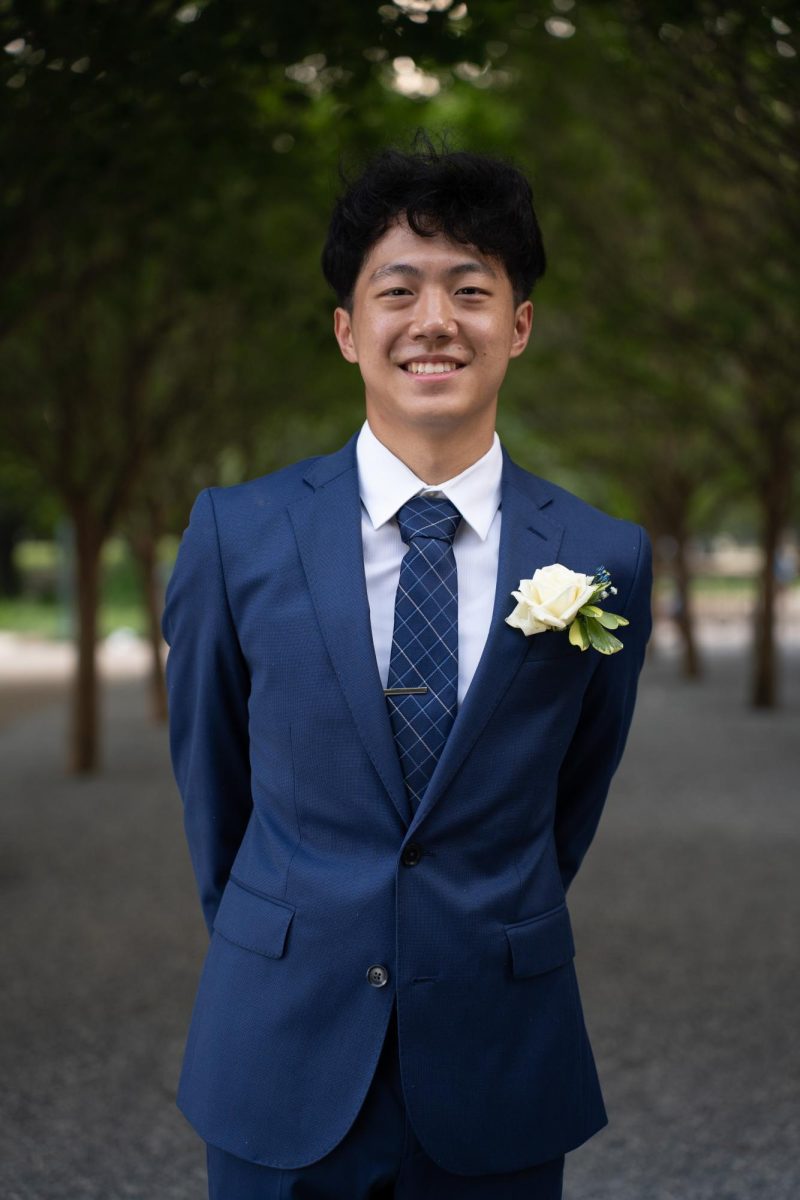My experience paddling through the Canadian wilderness
Sophomore Sara Wolf and her trip-mates congregate on a small island attached to the evening’s campsite. They play Egyptian Rat Slap (ERS) and War with a deck of cards while they wait for the sun to set.
May 26, 2021
I watch the glowing pink and orange water grasp onto my paddle and then glide into a swirly blur. As I continue to progress across the center of the lake, crossing the border between Canada and the United States, I admire the upside down sunset.
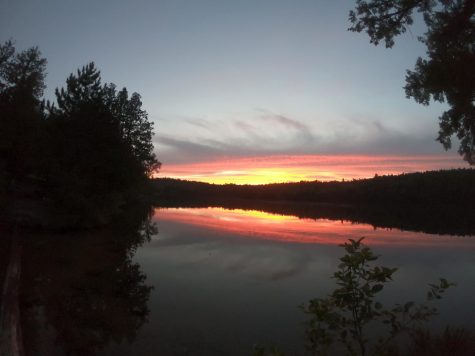
Birch Trail, a summer camp for girls ages 7 – 15, was labeled ‘my second home’ after attending it for five consecutive summers. Wilderness adventures were considered tradition as every cabin was required to partake in one within every four-week session. As the campers matured, the excursions grew increasingly more challenging. My passion for camping and love for nature grew immensely as the years passed.
In the summer of 2019, I was given the opportunity to choose between multiple wilderness adventures only offered to the two oldest age groups. My friends and I selected the longest and most backbreaking expedition dubbed ‘Quetico’, which had not been offered in the past five years.
I was shaken awake by one of my trip guides at 3 a.m. about a week after we had completed our selections. Six of my cabin mates and I quickly shoved our possessions for the next 10 days into garbage bags. We were each limited to packing only two outfits, a sleeping bag, a flashlight, a journal, a book, feminine products, a rain jacket, hiking shoes, and one communal toothpaste bottle. After stuffing our garbage bags into Duluth Packs, stacking the canoes on top of the van and grabbing a quick breakfast, we began our four and a half hour drive to Grand Marais, Minnesota.
After reviewing the ‘Leave No Trace’ policy at Seagull Outfitters & Cabins, my trip-mates, trip guides and I were towed out to Saganaga Lake. Within minutes, I was sitting in the bow of a canoe with my best friend seated in the stern as we paddled across the lake to the Canadian Border Outfitters. Our permits and identification certificates were verified before we ventured across the border, racing the fading daylight to our first campsite in Quetico Provincial Park.
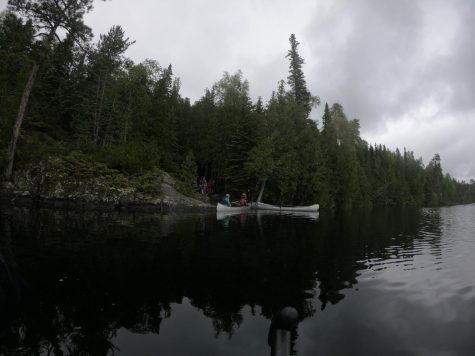
I woke up the next day to the sunrise and bustle of departure. Two bowls of oatmeal later, the group, along with all of our belongings and equipment, was back in our canoes pushing against the resistance of the lake’s currents. My muscles ached as I continued to paddle through the rain which was growing in intensity. Once the eight of us reached the end of the lake, we sat in our soaked paddling clothing while we worked together to locate the portage highlighted on our map. It was through this portage that we made three trips back and forth in order to carry all of our food, water, tents, Duluth Packs and four canoes to the next lake at the end.
This routine was repeated up to four times a day for the next eight days that followed. The portages at the end of each lake varied from nine feet to three miles long. After the seventh day of the trip, we canoed back across the border to the United States where we concluded our final three days in the Boundary Waters Canoeing Area.
One of the most challenging parts of this trip was continuously maintaining teamwork amongst my trip-mates. Prior to our adventure, the six of us had been practically living on top of each other in one large cabin with 39 other girls for two weeks. Living in total isolation in the wilderness together put even more stress on our relationships resulting in many conflicts. As the trip began to reach its conclusion, we all learned how to compromise, take charge when necessary, and have patience with one another.
Physically, I was one of the weaker members of our group. I found myself constantly frustrated by my inability to contribute as much as my peers when it came to carrying supplies across portages. Even so, rather than continuing to compare myself to my trip-mates, I set goals for myself that would allow for me to improve at my own rate while gradually pushing my physical limits. By the time we reached the Boundary Waters I was capable of carrying a canoe on my shoulders for as long as half a mile, and I couldn’t have been prouder of myself.
The struggles and obstacles presented to me by this trip taught me resilience, individuality, leadership, and to venture out of my comfort zone. I believe that this adventure is greatly responsible for the success I have had with adjusting and excelling in high school thus far. Trustable organizations that offer programs comparable to my ‘Quetico’ adventure include Outward Bound, National Outdoor Leadership School (NOLS) and Adventure Treks. It is because of my growth as a student and a leader that I strongly recommend all high schoolers look into similar wilderness experiences.


